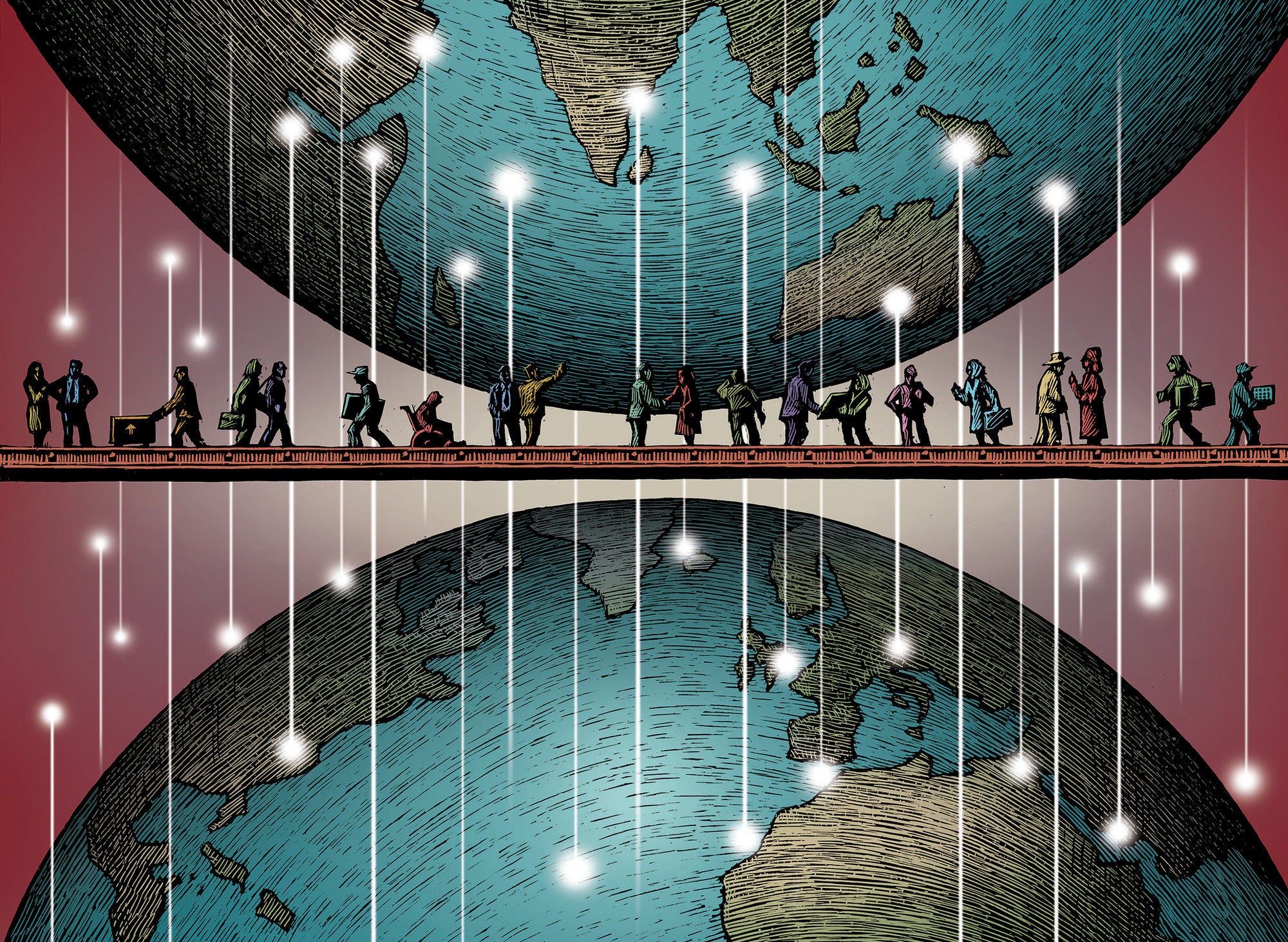The decade prior to the COVID‑19 pandemic has been one of significant progress in immigrant integration on many accounts. Relatively favourable labour market conditions in many countries and higher education levels of new arrivals have been coupled with further progress in reception policies for refugees and other migrant groups. Despite this progress, the country of birth remained a strong predictor of lasting inequalities, including across generations for native‑born children of immigrants.
Then the COVID‑19 pandemic arrived, disrupting our economies and societies, and widening pre‑existing inequalities in the labour market virtually everywhere. Those between immigrants and the native‑born are no exception. The latest labour market figures presented in this edition of the International Migration Outlook suggest that the pandemic has wiped out much of the progress in migrant integration seen in the past decade. While employment declined almost everywhere, the gap in the employment rate between foreign-born and native‑born widened across OECD countries to reach 2 percentage points on average, while the difference in the unemployment rate is now more than 3 percentage points. Foreign-born workers have been disproportionally affected by job losses, given their generally more precarious labour contracts but also their strong concentration in deeply affected sectors, such as hospitality where they account for 25% of total employment OECD-wide.
Young people with migrant parents are also facing particular difficulties in dealing with the disruptions and challenges brought about by the pandemic. About one in two children of immigrants do not speak the host-country language at home. As their parents tend to be less well able to support learning in the host-country language – and as their homes tend to be less well adapted to provide an appropriate learning environment – children of immigrants have often been particularly hard hit by the interruption of in-person education. This risks widening the gaps in educational outcomes between children of immigrants and children of native‑born, after almost two decades of progress. It will also translate into a more difficult school-to-work transition for children with migrant parents than for their classmates with native‑born parents. Already prior to the pandemic, youth with migrant parents were more likely to be not in employment, education or training (NEET) in two‑thirds of OECD countries.
The pandemic has also put further structural obstacles to migrant integration into the limelight. It notably led to a rise in anti‑immigrant sentiment in some countries, with growing evidence pointing to an increase in discrimination. The “Black Lives Matter” movement and other events, notably in Europe, have also drawn new attention to the issue of racial discrimination, with which immigrant discrimination is strongly interlinked.
To address the many social and economic challenges brought by the pandemic, OECD countries have started to implement massive recovery plans. It is pivotal that these plans devote attention to immigrant integration, to avoid further exacerbating the many disadvantages migrants face in our labour markets and societies. Three points require specific attention in this context.
First, the focus of integration needs to go beyond introduction measures for new arrivals in order to address structural disadvantages faced by settled immigrants and their children. Four out of five immigrants have been in OECD countries for more than five years. This will require broadening the focus of integration policies as well as co‑ordinated action across policy domains – notably health, labour, education, and housing – and levels of government. Given migrants’ overrepresentation among those in low-skilled jobs, specific attention needs to be devoted to making sure that migrants have the skills to fill the jobs of the future. This requires addressing the training gap between migrants and native‑born.
Second, more attention needs to be paid to the specific challenges in areas of high immigrant concentration. As this year’s International Migration Outlook shows, migrants living in such neighbourhoods tend to accumulate disadvantages, including through poor housing and infrastructure. What is more, these disadvantages tend to reinforce one another. There is, for example, a further penalty for living in areas of high immigrant concentration, which results in fewer opportunities for language learning and lower education outcomes for children of migrants. Policy action should thus not only enhance integration offers in these neighbourhoods but also promote social and geographical mobility, which are closely interlinked. To enhance the opportunities of those who remain, improving housing and broader local infrastructure need to be an integral part of recovery programmes.
Finally, we need to address the root causes of discrimination, which is the source of many – though certainly not all – structural disadvantages faced by migrants. The good news is that the period 2020‑21 has seen unprecedented policy action to address the issue of discrimination against migrants and other minorities. As Chapter 3 of the Outlook highlights, many OECD countries as well as the EU have put specific action plans in place. Many countries have also run information campaigns to tackle anti-migrant sentiment in the context of COVID‑19. However, much more needs to be done to tackle the sources and consequences of discrimination and to provide equal opportunities for all.
Comprehensive and co‑ordinated action is required to avoid that the pandemic leads to a lasting setback on migrant integration. Given the large numbers concerned, such a setback would not only entail negative economic consequences, but also threaten social cohesion at large. In contrast, improving migrant integration would also entail important fiscal gains, as our calculations in this Outlook show. There is thus no time to waste on this front.

Stefano Scarpetta,
Director for Employment, Labour and Social Affairs,
OECD
